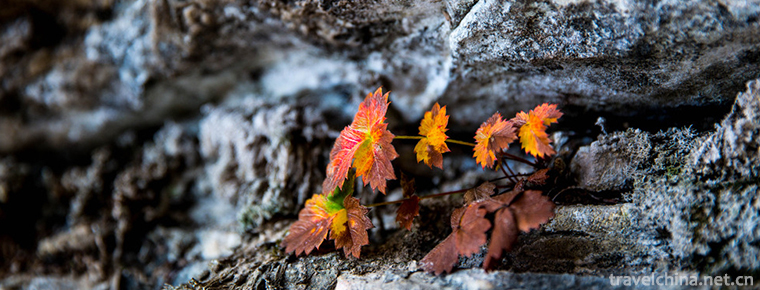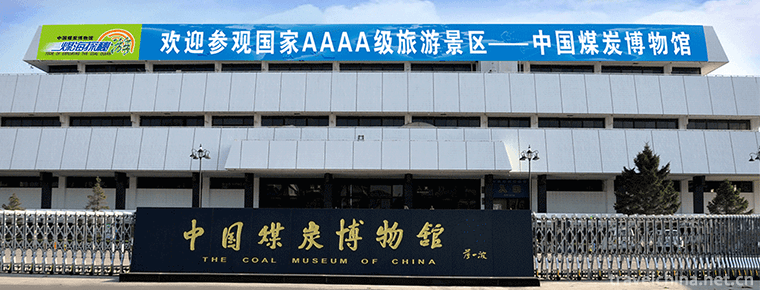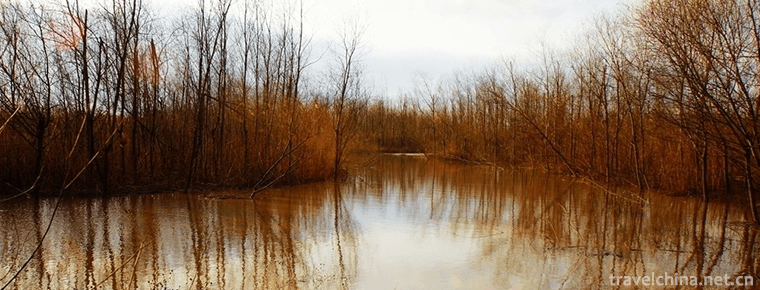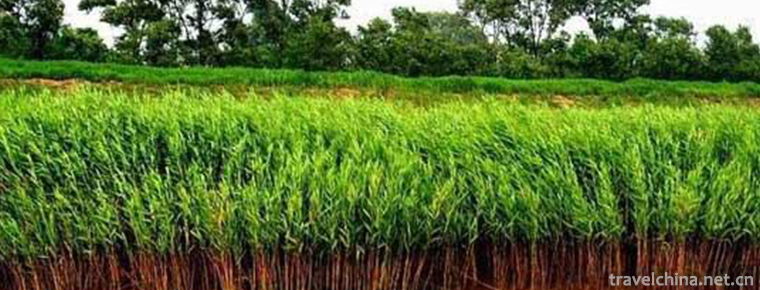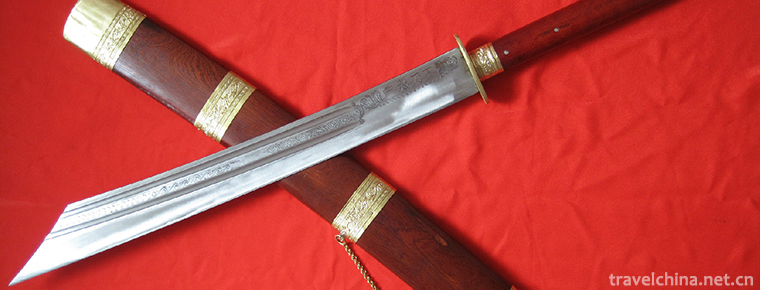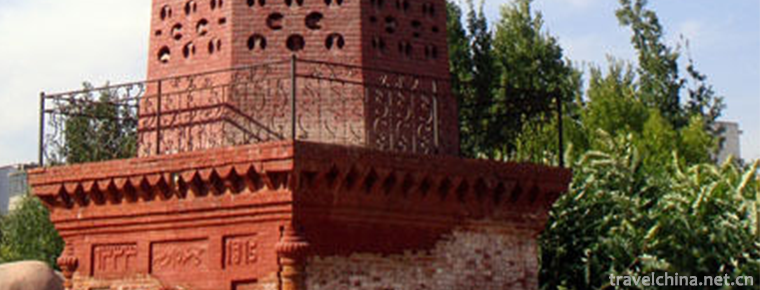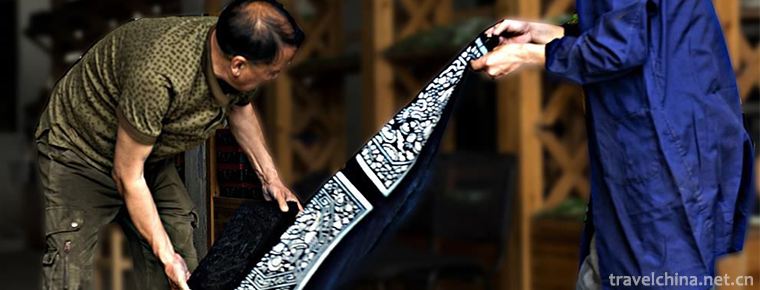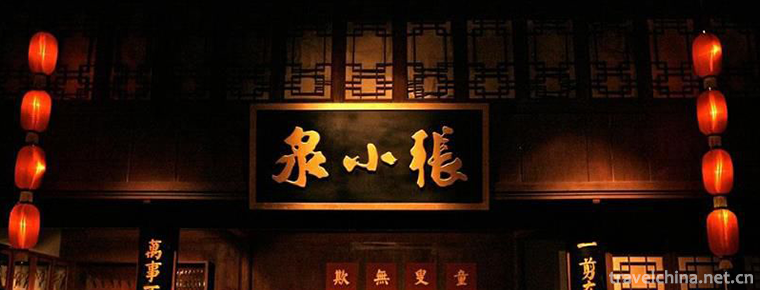Yongchun Paper Weaving Painting
Yongchun Paper Weaving Painting
Yongchun Paper Painting, a special product of Yongchun County, Fujian Province, is a national geographical indication product of China.
"Yongchun County Chronicle" records: "In the early Tang Dynasty, Yongchun had the production of paper-woven paintings. Yongchun paper weaving painting features: interwoven paper marks, distinct latitude and longitude, elegant color, hazy picture.
On May 14, 2015, the former General Administration of Quality Supervision and Inspection approved the implementation of the protection of geographical indication products for "Yongchun Paper Painting".
Product characteristics
Huang Yongyuan, a famous artist of modern paper weaving painting, summarized the characteristics of paper weaving painting in his book The Purpose of Paper Weaving Painting, namely the elegance of color and the obscurity. Paper weaving paintings choose a wide range of subjects, rich in content, landscapes, birds, animals, historical figures, myths, folklore, paper weaving paintings are colorful, but because after cutting and weaving, plus a strip of white paper silk weft covered up, its color was half, very color only. When you can see four points, it produces the elegance of color, which greatly improves the artistic style of the finished paper paintings. The obscurity is the effect of "seemingly or not". Close look at paper weaving paintings, the screen paper marks interwoven, warp and weft obvious, can only see a little bit of square color, confused; hanging on the wall near, you can see the order of color, shade, obscurity; standing far, you can experience the whole picture of the scenery floating in the mood. It can be said that "myopia is almost a different kind of image, while farsightedness is a clear scene", which is similar to Mi Fu's "Mi Dian Landscape" of the famous painter of the Song Dynasty. In addition, the surface of paper weaving paintings is not smooth, with a "shallow relief" like three-dimensional feeling.
Origin Environment
Yongchun County is located in the southeastern part of Fujian Province and the upper reaches of Dongxi River of Jinjiang River. It is adjacent to Xianyou County in the east, Nan'an City and Anxi County in the south, Zhangping City in the West and Dehua and Datian in the north. It is between 117 41 55 to 118 31 9 in the East and 25 13 15 to 25 33 45 in the north. The terrain inclines from northwest to southeast. The western part is the main part of the Daiyun Mountains. There are 58 peaks above 1000 meters above sea level, with the highest snow mountain (1366 meters above sea level); the eastern part is terraced. Yongchun has more mountains and less land, and its terrain tends to be higher in the northwest and lower in the southeast. The famous Daiyun Mountains stretch throughout the country. Many peach trees are planted along the Taoxi River in Yongchun, which is also called "Taocheng". When spring flowers are in full bloom, it attracts many people who take steps to appreciate them. Looking at flowers in the fog, this unique landscape stimulates the creative thinking of local artists. Paper weaving painting is produced in this particular environment, so the development of paper weaving painting in Yongchun has a very good foundation.
historical origin
Although Quanzhou in southern Fujian belongs to the coastal area, Yongchun is an inland hilly area in the coastal area. Its climate is humid and foggy. The scenery is often covered in misty rain and smoke, which is of special interest. There are many mountains and mountains in the territory, and bamboo weaving industry is very developed. The paper weaving and painting technology is inspired by the bamboo weaving technology. "Yongchun County Chronicle" records: "In the early Tang Dynasty, Yongchun has the production of paper-woven paintings." It is said that when the son of Chen Hou-zhu (Chen Jingtai) fled to Yongchun, the palace painters accompanied by the army combined the Chinese painting skills with the bamboo weaving techniques of the local people. At the beginning of Tang Dynasty, it was only in its infancy, but it had become mature in the flourishing Tang Dynasty. During the reign of Tang Wenzong, Zheng Weifu, a Tang poet, wrote: "What is the most pleasant thing to wear, the longitude and latitude between papers have different reasons; who is skillful as a Vimo hand, he is absolutely incomparable in the wilderness, the distant hills and corners are wonderful, and the moonlight is really set off by the clouds; the poor management is concerned with artisans, and he is far good at Taoyuan's new features."
Quanzhou is a famous "Silk Road on the Sea". In Song Dynasty, paper-woven paintings were exported to Nanyang ports and became treasures in the cabinets of wealthy families. In the book "Returning to the Green Rizha" written by Tian Yigao, the Ming Dynasty, it is recorded that among the articles copied by Yan Song's family, the treacherous Minister of the Ming Dynasty, there is a paper-woven painting. Yang Fuji, a Qing dynasty, once wrote about "weaving paintings in Yongchun Prefecture, central Fujian Province" in Menglan Brush. According to historical records, Emperors Kangxi and Qianlong loved paper-weaving paintings very much. There are sometimes hanging screens in the court. Now, the Palace Museum also holds twelve screens of Qing Gaozong's imperial poems, a paper treasure during the reign of Emperor Qianlong in the Qing Dynasty. Due to historical reasons, Yongchun's paper weaving paintings have experienced nearly a century of silence since the end of the Qing Dynasty. Paper weaving paintings are mostly sold in South Asia. When Japan invaded China, the Japanese invaders blocked the maritime traffic and cut off the sales. Many artists could not make a living and had to change their professions. Paper weaving paintings almost fell into a state of extinction. In the 1930s, there were only Li Guiting, Zhang Nanting, Wang Huating and Huang Fangting. After the founding of the People's Republic of China, only Huang Yongyuan, a librarian of Fujian Provincial Museum of Culture and History, was left. In order to develop paper-weaving paintings, Huang Yongyuan resolutely removed the stereotype that "daughter-in-law does not pass on to daughter, father and son, outsiders do not pass on" and emancipated the mind. Since 1957, more than 30 students of both sexes have been recruited, most of whom are girls, because girls are more careful and can engage in the process of weaving and painting. Among these disciples, only Zhou Wenhu and other two or three were able to draw, weave and cut. Through the efforts of Huang Yongyuan and his disciples, paper weaving painting has been revived and developed.
Production situation
In May 1987, the Yongchun Paper Weaving and Painting Research Association was established, with more than 20 members in the first batch. In October, the Yongchun Paper Weaving and Painting Exhibition was held in Fuzhou by Yongchun County Government and Fujian Qunyi Museum, which caused a sensation in Rongcheng. Ms. S. Helomsek, who is visiting the Oriental Museum of Art in Moscow, Fuzhou, was very surprised and delighted with her inscription: "Congratulations on the success of the artist's exhibition." Huang Yongyuan, Huang Xiuyun's "Magu Xianshou", Zhou Wenhu, Zhou Mason's "Eight Immortals Crossing the Sea" won excellent awards, Fang Yongzong's "Platycodon" and Zhou Mason's "Spring, Summer, Autumn and Winter" won innovation awards and were collected by provincial art gallery.
In 1997, in order to commemorate the Seventieth Anniversary of Hong Kong's Centennial return and the founding of the army, the Zhou Wenhu family began the creation of "Long Volume of 100-meter Baihu Paper Weaving Painting". At that time, a businessman came to Zhou Wenhu with admiration and offered to buy the painting for 1.5 million yuan. However, after consideration, the Zhou Wenhu family resolutely donated the painting to the Chinese military museum. Museum collection, during the exhibition, caused a great sensation.
In 2009, Zhou Wenhu and Li Shiqiu, the paper weavers and painters of Yongchun Yiting, combined traditional techniques with modern science and technology, finally created the Contemporary 100-meter Great Wall Picture in three years, which was selected as the second Chinese folk national treasure with an insurance value of 50 million yuan. The work has also won the "Guinness of the Great World" before.
In 2011, Yongchun paper weaving painting was selected as the national intangible cultural heritage.
In 2014, Yongchun County's first creative cultural industry park with paper weaving and painting culture as its theme was unveiled.
Product Honor
In March 2000, Yongchun County was named "the hometown of Chinese paper weaving and painting" by the Ministry of Culture.
In November 2008, Yongchun County was named "Town of Chinese Folk Culture and Art" by the Ministry of Culture.
On June 14, 2011, Yongchun Paper-woven Painting was listed in the third batch of national intangible cultural heritage list with the approval of the State Council.
On May 14, 2015, the former General Administration of Quality Supervision and Inspection approved the implementation of the protection of geographical indication products for "Yongchun Paper Painting".
geographical indication
Overview
In accordance with the Regulations on the Protection of Products of Origin, the General Administration of Quality Supervision, Inspection and Quarantine has passed the examination of the application for the protection of products of Origin of Yongchun paper-woven paintings, and approved the implementation of the protection of Origin of Yongchun paper-woven paintings from April 21, 2015 (Announcement No. 44, 2015).
Scope of geographical protection
The area of origin of Yongchun paper-weaving paintings shall be the administrative area under the jurisdiction of Yongchun County, Fujian Province, according to the area of origin proposed by the People's Government of Yongchun County, Fujian Province, in the Report on Application for Determining the Protective Range of Products in the Origin Region of Yongchun Paper-weaving Paintings (Yongzheng Wen No. 121, 2016).
Quality Technical Requirements
I. Major raw and auxiliary materials
1. Paper: Painting and calligraphy paper made from bamboo or reed in the area of origin;
2. Pigments: Pigments with a proportion of natural ore powder not less than 80% produced in the range of origin;
3. Supplementary materials: extract of azedarach root (seed) and peach gum in the range of origin.
II. PRODUCTION AND PROCESSING TECHNOLOGY AND REQUIREMENTS
1. Painting: The proportion of natural ore powder produced within the range of origin of the pigments used is more than 80%.
2. Cutting: the strip is uniform in thickness and the breakage rate is less than 2%.
3. Weaving: in the relative humidity of 70% to 80%.
4. Mounting: The mounting paste contains 10% azedarach root (seed) extract and 10% peach gum.
3. Quality Characteristics
1. Appearance characteristics:
(1) The mounted product has a flat appearance, no wrinkles, no damage, no dirty marks and no scars after bonding the broken paper silk.
(2) The width of the warp and weft lines should be uniform, arranged neatly and smoothly, the warp lines should not be dispersed, and the knitting of the weft lines should be closely knitted without obvious clearance.
(3) Each longitude and latitude are parallel to each other, each longitude and latitude are perpendicular to each other, the slips of paper are neat and without hairy edges.
(4) The width of longitude and latitude should be the same. The maximum width should be less than 2.5 mm and the absolute deviation should be less than 0.2 mm.
2. Safety and other quality technical requirements: The product safety and other quality technical requirements must comply with the relevant national regulations.
Use of special logo
If the producers in the area of origin of Yongchun paper-weaving paintings use the "special mark for products of origin" of Yongchun paper-weaving paintings, they must apply to the declaration body established by the local quality and Technical Supervision Bureau and pass the preliminary examination. Only after the announcement and approval of the State Administration of Quality Supervision and Inspection, can they use the "special mark for products of origin" of Yongchun paper-weaving paintings. "

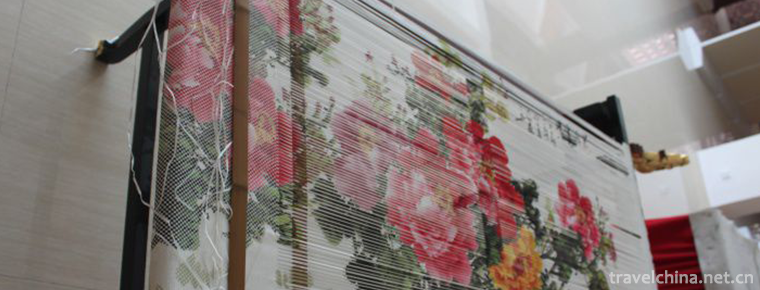
-
Baishishan Scenic Area Baoding City Hebei Province
Baishishan Scenic Area, also known as Baishishan National Geological Park, is called "Xiaohuangshan" because its scenery resembles the Huangshan Mountain in Anhui Province..
Views: 252 Time 2018-11-24 -
China Coal Museum
The China Coal Museum is located at the intersection of Yingze Street and Jinci Road in Taiyuan City. It was completed and opened on September 30, 1989.
Views: 185 Time 2018-12-22 -
Xisha Wetland of Pearl Lake
Located in Luhua Town, west of Chongming Island, Shanghai Mingzhu Lake is the largest natural inland lake on the island. It is also the main area of western water recreation .
Views: 155 Time 2019-02-07 -
Weihai Dingxiang Ecotourism Resort
Panjin Dingxiang Ecotourism Resort is located in the western suburb of Panjin City. The tourist area is mainly composed of Taiping River scenic belt, Bird Paradise Scenic.
Views: 500 Time 2019-02-22 -
The Forging Skill of Achang Husha Knife
Achang household knife forging technology, Yunnan Dehong Dai Jingpo Autonomous Prefecture Longchuan County household Sa Township traditional handicraft, one of the national intangible cultural heritag.
Views: 189 Time 2019-03-28 -
Construction Skills of Russian Nationality Residences
Historically, Tacheng once had the reputation of "Oriental Moscow", which is by no means a historical accident. It has a close relationship with the border trade in the past 150 years.
Views: 344 Time 2019-04-28 -
Kazakh Aytes
Kazakh Aytes is a typical representative of Kazakh folk art, a competitive form of performance, is the most abundant content of Kazakh folk oral literature, the most influential literary type among th.
Views: 229 Time 2019-05-02 -
Haimen mountain song
Haimen Mountain Opera is a traditional opera popular in Haimen area of Nantong, Jiangsu Province. It originated from Haimen Mountain Song and developed into .
Views: 321 Time 2019-05-02 -
Blue Clip Valerian Skills
Blue clip valerian technology, the local traditional printing and dyeing technology of Wenzhou City, Zhejiang Province, is one of the national intangible cultural heritage..
Views: 306 Time 2019-05-11 -
Forging Skill of Zhang Xiaoquans Scissors
In 1663, Zhang Xiaoquan's scissors were first created in Hangzhou, and later became one of the famous "five Hangzhou" products. The development of "Zhang Xiaoquan" scissors has exp.
Views: 278 Time 2019-07-25 -
down the mountain Yao Bu Yao Mai Cai Tik Tok Songs 2020 Hot Songs
"Down the mountain" is composed by Zhu bin. Yao Bu Yao Mai Cai to sing. It was released on November 22, 2019.
Views: 141 Time 2020-05-21 -
Panzhihua famous specialty
The snacks in Panzhihua are mainly Sichuan flavor. The most popular snack in Panzhihua is mutton rice noodles. The rice noodles cooked by pure mutton soup, together with bean paste, pepper, millet and other seasonings, have a unique and representative flavor.
Views: 290 Time 2020-12-14
